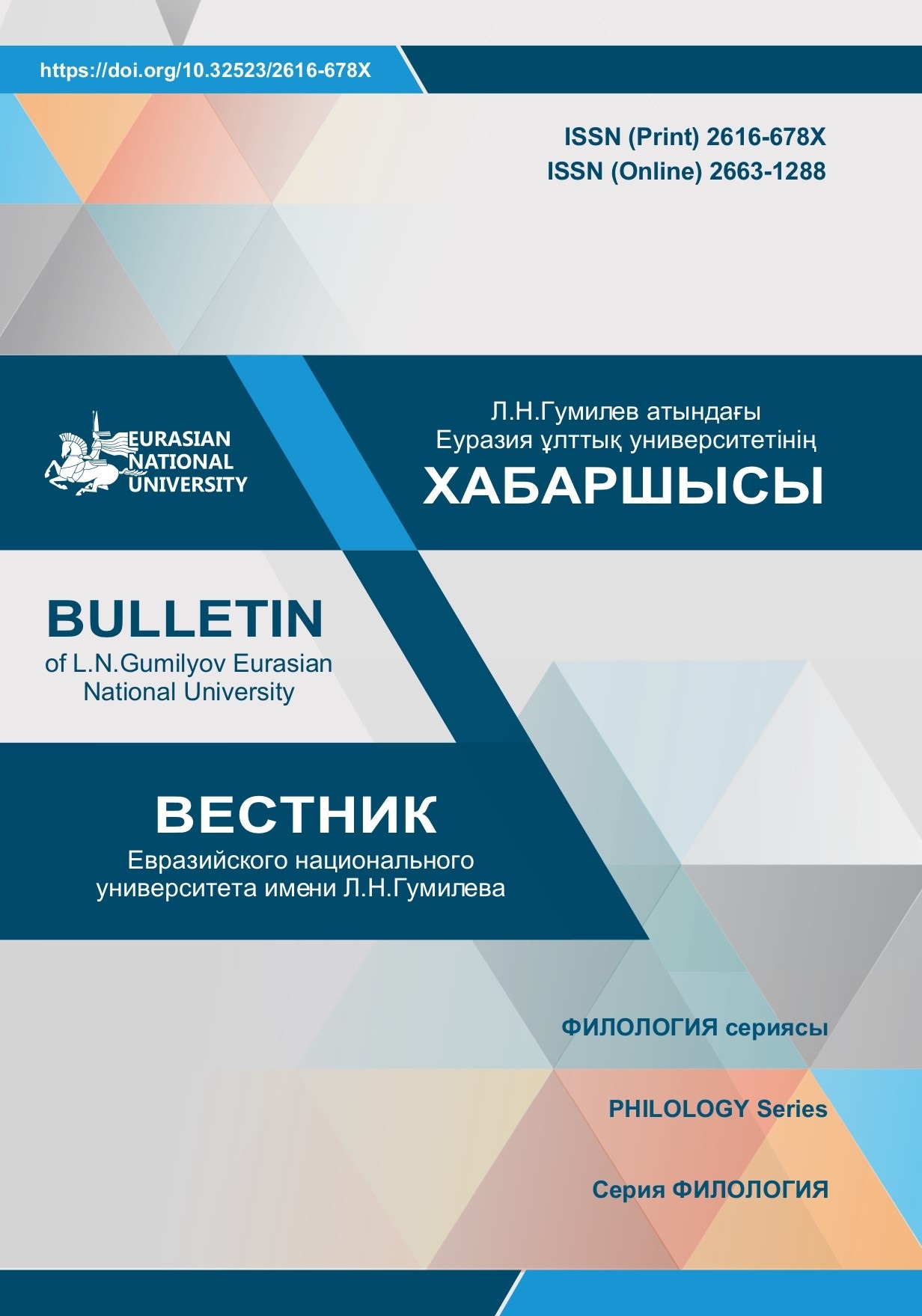Analysis of imitative words used in А.Suleymenov’s work «Besatar»
Views: 190 / PDF downloads: 195
DOI:
https://doi.org/10.32523/2616-678X-2024-147-2-127-137Keywords:
Imitative words, Askar Suleymenov, Besatar, Theory of Imitatives, Оnomatopoeia.Abstract
Askar Suleymenov, who lived in the twentieth century, is one of the most prominent
representatives of Kazakh literature. The author’s works are distinguished by a different poetic style and clear language. The work “Besatar” has its own place in Kazakh literature in terms of ideological innovation, new approach to national knowledge, poetic language, and stylistic features. There are so
many imitative words used in “Besatar” that it is not difficult to notice that the author used these words purposefully while enriching the poetic language and emotional coloring of the work.
In this article, the imitative words used in Askar Suleymenov’s work “Besatar” are analyzed from the perspective of “Theory of Imitatives” and grouped in a new way. By comparing imitative words in modern Turkic languages and imitative words in the Kazakh language, imitative words common to Turkic
languages in the work are shown individually.
The collected imitation words were grouped according to the way they were formed in the form of imitators and imagers, imitation word+auxiliary verb use, imitation words made from color names. Imitations and representations were collected and analyzed in the form of those used in the singular
and complex depending on their composition, and those used in the bare form according to the scope of
structural development, those used in the noun composition, those used in the adjective composition and
those used in the verb composition. Imitative words common to Turkic languages and imitative words
found only in Kazakh were shown in two groups.







